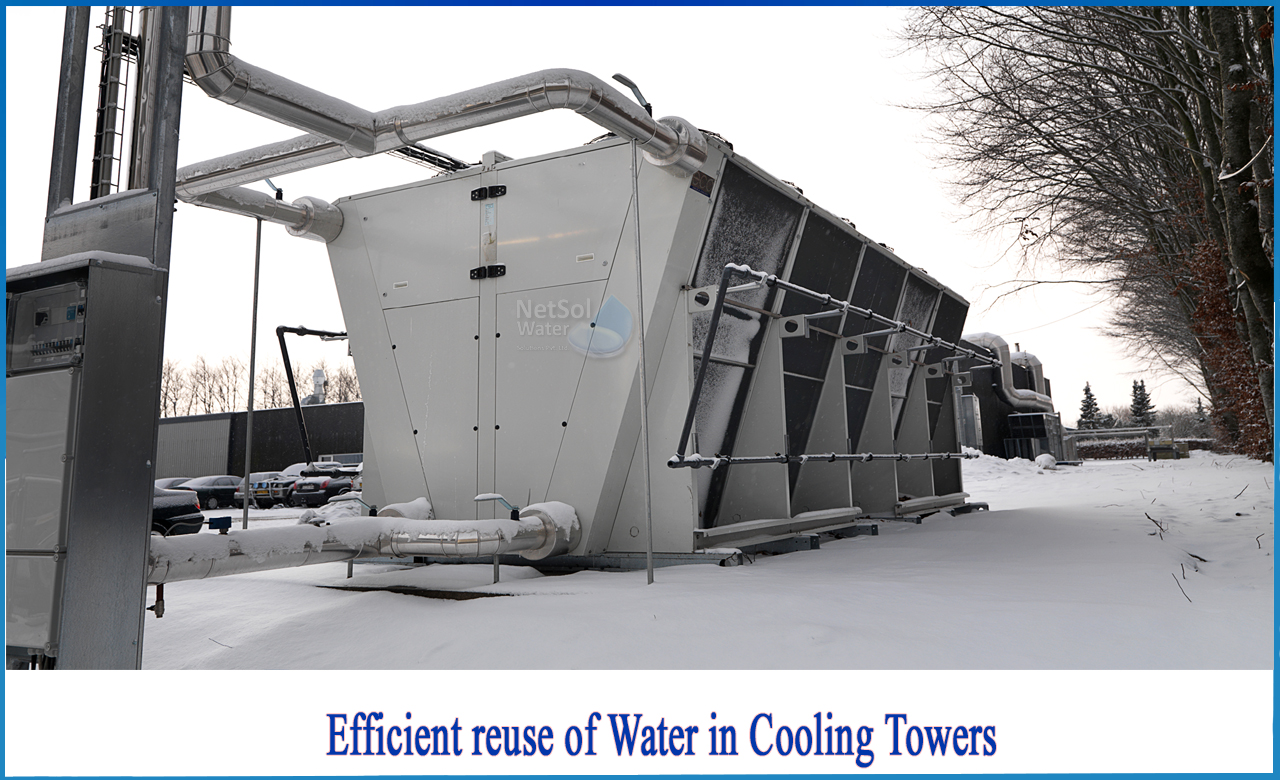Is it possible to reuse cooling towers water?
Reusing water in cooling towers entails converting low-quality wastewater and feedwater into high-quality water for use incooling. It is a developing global trend that benefits businesses economically.
Composition of cooling water varies with time
The cooling water in the circuit's composition changes dramatically over time when evaporation increases the concentration of all salts, foreign matter enters the cooling circuit via air and the process itself and when chemicals are added to allow for recirculation.
What are the issues that arise when we opt for reusing cooling tower water?
These issues must be answered before any preparations to convert an existing cooling tower water system to recycled water;
Q1: How much does recycled water cost compared to fresh water?
Q2: Will the cooling tower's water treatment cost be higher or lower if recycled water is used instead of current water, and by how much?
Q3: Will the recycled water require additional treatment before it is acceptable? If so, what are the associated costs?
Q4: Will additional water monitoring or feed systems be required, and if so, how much will they cost?
Netsol Water, your recycled water provider, your water treatment supplier and an independent water treatment consultant, can typically address these questions of concern.You will get the idea once these questions have been answered and we’ll be able to tell you whether or not switching to recycled water is a good idea.
How do we know that the cooling water is fit for re-use?
1: The first and most important piece of information is to figure out the metallurgy and operating characteristics of any water-contact equipment. This comprises all heat transfer units, towers, and pipelines.
2: Operators must be able to identify the highest and average temperatures, as well as the average and minimum water velocities, whether any equipment is stagnant or redundant, and the period of no flow. With fresh water, it's crucial to figure out how much corrosion, deposit, and biological protection is required. This will provide direction on what needs to be done with reclaimed water.
3: Different sectors will have different designs and operational parameters, necessitating a greater focus on specific recycled water constituents than others.
4: Both HVAC and utility power plant cooling tower water systems must restrict ammonia in recycled water and use copper in their chillers and condensers. Galvanized steel cooling towers are commonly used in HVAC systems, and they can develop "white rust" due to copper plating.
5: Because the chemical sector uses stainless steel heat transfer surfaces, chlorides that can induce pitting and stress corrosion cracking must be kept to a minimum.
6: Each industry has its own set of designs and operations that must be discovered and analysed in order to avoid unanticipated harm or shortened life expectancy as a result of recycled water ingredients.
Conclusion
For existing cooling tower systems, the facility can change out various water contacted equipment’s to handle the recycled water quality. However, this cost is very often undesirable. It can be more cost effective for the water provider to treat the recycled water to meet the desired quality.
The benefits may also include an effective treatment of the blowdown water which cuts down on electricity usage, less usage of chemicals and decreases the amount of fresh water that needs to be pumped into the cooling system. This improves your economic efficiency while also assisting in environmental protection. In this way, fresh water can be saved by constructing a proper water reuse system even if alternative water sources are available. Each cooling tower system needs to review their recycled water and their system for a more accurate determination of any adverse or beneficial impact.
For more information or product purchase related query, contact us on +91 9650608473 or drop an email at enquiry@netsolwater.com.



